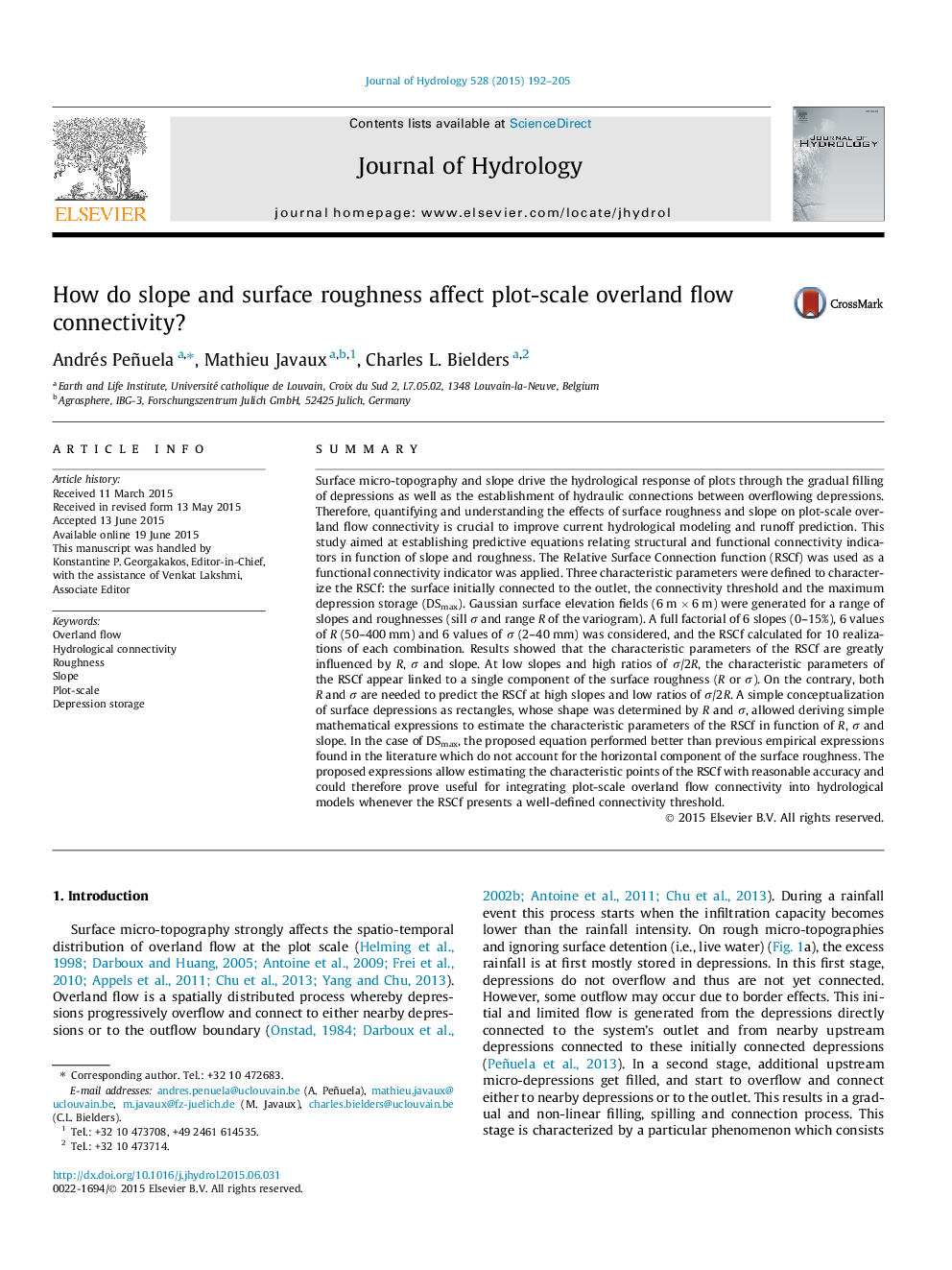| Article ID | Journal | Published Year | Pages | File Type |
|---|---|---|---|---|
| 6410885 | Journal of Hydrology | 2015 | 14 Pages |
â¢Surface roughness and slope have remarkable effects on overland flow connectivity.â¢A conceptualization of surface roughness by rectangular depressions is proposed.â¢Equations to predict runoff-relevant features of connectivity are proposed.â¢A novel equation is proposed to predict the maximum depression storage (DSmax).â¢DSmax equation performed better than empirical expressions found in the literature.
SummarySurface micro-topography and slope drive the hydrological response of plots through the gradual filling of depressions as well as the establishment of hydraulic connections between overflowing depressions. Therefore, quantifying and understanding the effects of surface roughness and slope on plot-scale overland flow connectivity is crucial to improve current hydrological modeling and runoff prediction. This study aimed at establishing predictive equations relating structural and functional connectivity indicators in function of slope and roughness. The Relative Surface Connection function (RSCf) was used as a functional connectivity indicator was applied. Three characteristic parameters were defined to characterize the RSCf: the surface initially connected to the outlet, the connectivity threshold and the maximum depression storage (DSmax). Gaussian surface elevation fields (6 m Ã 6 m) were generated for a range of slopes and roughnesses (sill Ï and range R of the variogram). A full factorial of 6 slopes (0-15%), 6 values of R (50-400 mm) and 6 values of Ï (2-40 mm) was considered, and the RSCf calculated for 10 realizations of each combination. Results showed that the characteristic parameters of the RSCf are greatly influenced by R, Ï and slope. At low slopes and high ratios of Ï/2R, the characteristic parameters of the RSCf appear linked to a single component of the surface roughness (R or Ï). On the contrary, both R and Ï are needed to predict the RSCf at high slopes and low ratios of Ï/2R. A simple conceptualization of surface depressions as rectangles, whose shape was determined by R and Ï, allowed deriving simple mathematical expressions to estimate the characteristic parameters of the RSCf in function of R, Ï and slope. In the case of DSmax, the proposed equation performed better than previous empirical expressions found in the literature which do not account for the horizontal component of the surface roughness. The proposed expressions allow estimating the characteristic points of the RSCf with reasonable accuracy and could therefore prove useful for integrating plot-scale overland flow connectivity into hydrological models whenever the RSCf presents a well-defined connectivity threshold.
